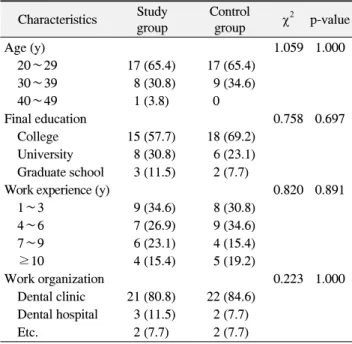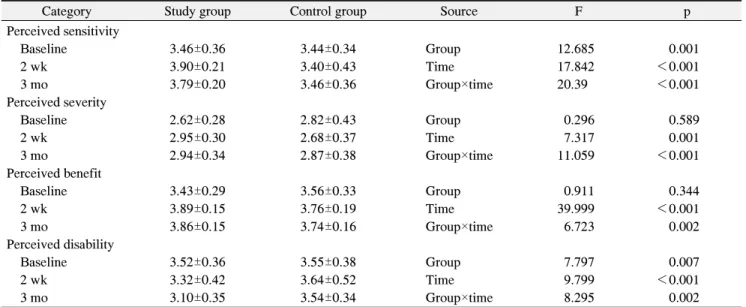RESEARCH ARTICLE
Received: March 24, 2017, Revised: April 22, 2017, Accepted: May 28, 2017 ISSN 1598-4478 (Print) / ISSN 2233-7679 (Online)
†
Correspondence to: Soo-Yeoun Han
Department of Dental Hygiene, Hyejeon College, 25 Daehak-gil, Hongseong 32244, Korea Tel: +82-41-630-5207, Fax: +82-41-630-5176, E-mail: gkstn99@naver.com
Copyright © 2017 by Journal of Dental Hygiene Science
Effects of Infection Control Training on Dental Hygienists ’ Health Beliefs and Practices
of Infection Control
Sun-Jin Moon, Kyeong-Jin Lee 1 , and Soo-Yeoun Han 2†
Dental Clinic, Kolon Couple, Jeonju 55122,
1
Department of Dental Hygiene, Vision College of Jeonju, Jeonju 55069,
2

